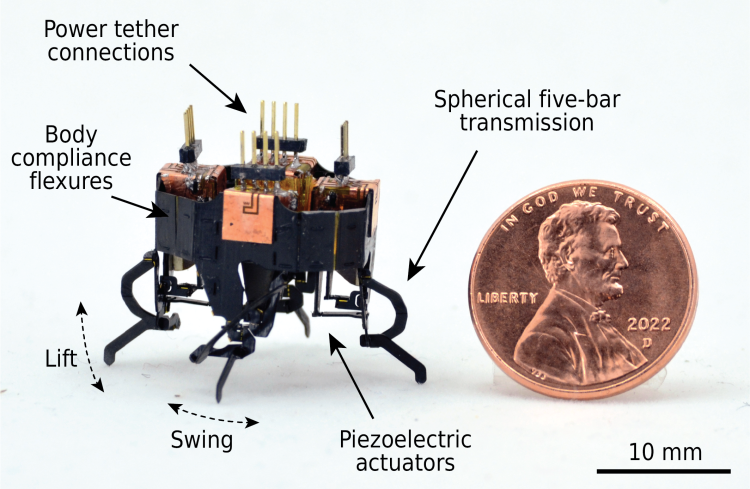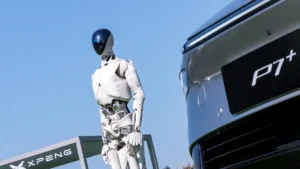
Miniature, Morphing Robot Envisions Future Role in Internal Surgery
A tiny robot, like a spider, named mCLARI is super light, less than a gram! It might help first responders after a disaster or assist in surgery one day

Researchers created a small, shape-changing “spider-bot” that can move around and change its shape without using active control.
The spider-like robot, named “mCLARI,” is a first step towards creating a robot that might do surgeries or search for people in disaster areas, say its creators.
This tiny robot is 0.8 inches long, weighs less than 0.03 ounces, and can move at speeds up to 2.4 inches per second, as per research published on October 6 in the arXiv preprint database.

The tiny robot is an upgraded version of CLARI, its predecessor, designed by the same team. Like CLARI, it can change its shape on its own to fit through tight spaces, but it’s even smaller and faster.
The lead author of the study, Kaushik Jayaram, who is a mechanical engineering professor at the University of Colorado, explained, “Because of the robot’s small size and the ability to shape morph, we envision applications of this technology in the following four major areas that are really important for people.”
These areas include responding to disasters, inspecting valuable things closely, keeping an eye on the environment, & practicing precise medicine.
“In the future, we imagine these robots could effectively move through human bodies and carry out automated surgeries, like unclogging an artery or removing a tumor,” stated Jayaram.
With the development of mCLARI, Jayaram’s team is getting closer to making robots that can navigate intricate environments similar to living organisms. In 2020, the team crafted a tiny robot inspired by cockroaches called HAMR-JR.
For both the cockroach-inspired robot and the new spider-like robot, the team utilized a method similar to origami. They etched microelectromechanical components onto a 2D sheet and then folded them to create a 3D structure.
The mCLARI robot features four leg modules capable of moving in two different directions. It can navigate through narrow spaces by switching between forward and side-to-side movements, utilizing various walking patterns and scurrying speeds.
The legs connect to the body through passive joints, allowing mCLARI to adjust its body shape according to the surroundings. For instance, its legs can stretch up to 50% in specific spaces.
In their future work, the scientists aim to enhance mCLARI’s power and sensing capabilities. “We are also eager to explore how changing the robot’s shape can improve its ability to move around,” mentioned Jayaram.
Never miss any important news. Subscribe to our newsletter.
Related News


British Investor Who Predicted US Slump Warns of Next Crash

I’m a Death Doula: 4 Reasons I Believe Death Isn’t the End


Tech to Reverse Climate Change & Revive Extinct Species

AI Unlocks the Brain’s Intelligence Pathways

XPENG Unveils Iron Robot with 60 Human-like Joints

Can AI Outsmart Humanity?

11 ChatGPT Prompts to Boost Your Personal Brand

Keir Starmer Hints at Possible Tax Hikes on Asset Income

Navigating the Future of AI: Insights from Eric Schmidt
